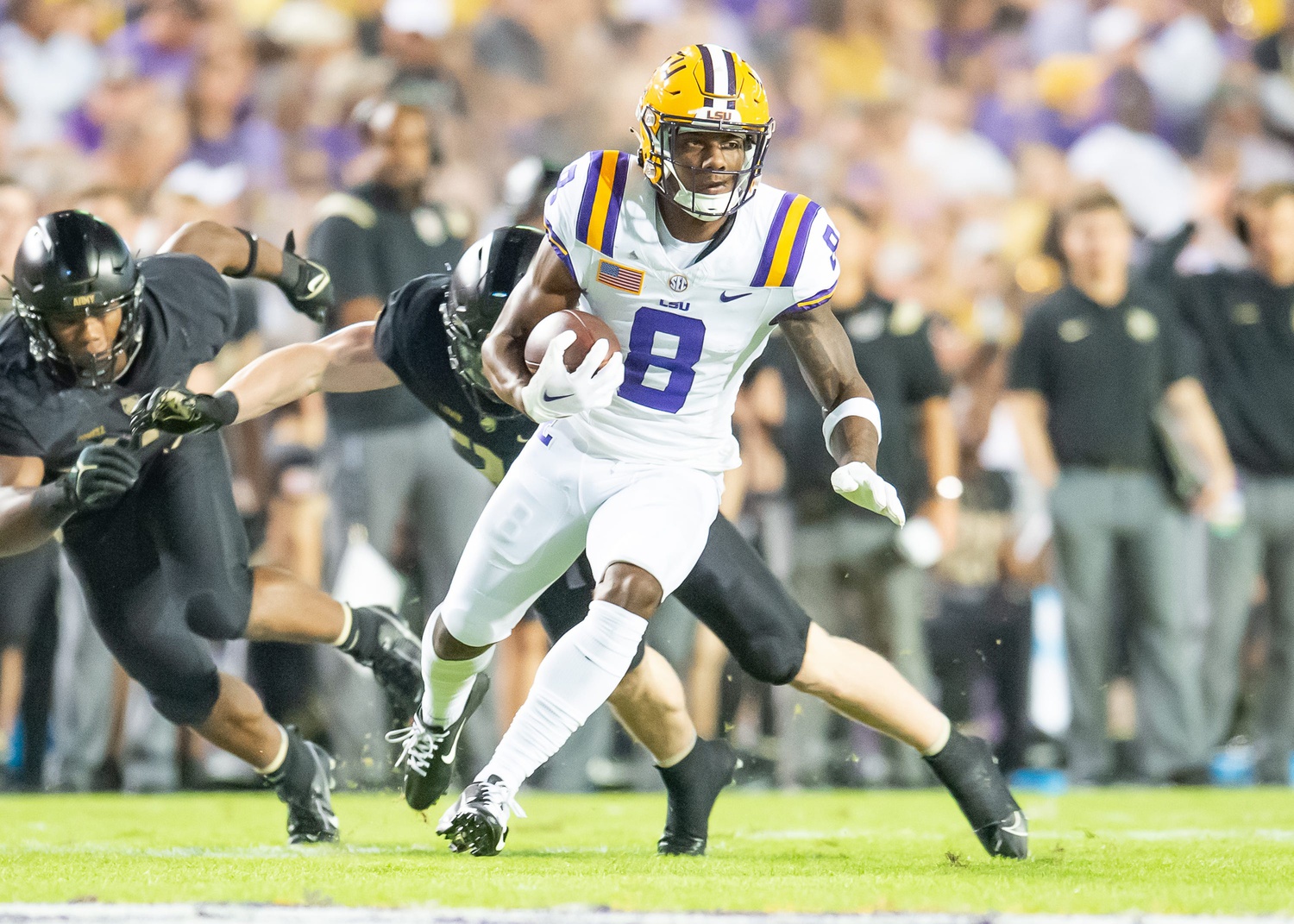Five Keys to LSU vs. Alabama
It seems like just yesterday the excitement of LSU’s Fall camp permeated the air as a precursor to regular season football – essentially the snack before the meal. Suddenly, three-quarters of the season is in the rearview mirror, and the most anticipated game of the year is quickly approaching. LSU vs. Alabama is here, and so are the keys to the game.
This year’s version of the rivalry features two teams with underachieving units compared to their predecessors. Alabama’s offense is nowhere close to the high-flying offenses of the Bryce Young and Tua Tagovailoa days. LSU’s defense triggers nightmares of Bo Pelini’s second stint as the defensive coordinator, prompting career days for new offensive players every week.
The talk leading up to this game will revolve around the explosive Tiger offense and shorthanded LSU defense, but there are several matchups within the game that will ultimately determine the outcome on Saturday night. Winning the smaller battles will be critical, below are five deciding factors that will establish the winner.
Alabama vs. Slot Receivers
The Crimson Tide boasts one of the most talented secondaries in the country, littered with NFL prospects. Even so, opponents have been able to make easy completions targeting slot receivers. Defensive Coordinator Kevin Steele gives offenses multiple different looks, sometimes to Alabama’s detriment.
Tennessee had success with its slot receivers in several different ways, starting with finding them behind linebackers and in front of safeties against Alabama’s Cover 2 zone coverage. The Tide slot defenders are typically so committed to maintaining their inside leverage in man coverage that they concede out routes for easy completions. Be it busted coverage or play design, Tennessee hit a big play for a touchdown early when gaining the good fortune of a linebacker lining up against Squirrel White in the slot with no help over the top.
Malik Nabers leads the country in receiving yards, with a significant percentage of snaps played as a slot receiver. Nick Saban and his coaches will surely adjust, but they don’t tend to assign cornerbacks to receivers to follow them around the field. The LSU offense is too efficient for Alabama to make it even easier for it.
LSU vs. Quarterback Runs
Let’s get this out of the way. Jalen Milroe is not a running quarterback. He does not drop back with the intent to take off at the first sign of trouble. Milroe is content with being a pocket passer, but Alabama needs him to be more than a pocket passer.
Offensive Coordinator, and Brian Kelly protégé, Tommy Rees will likely call designed run plays for Milroe, as he should. Milroe is an incredibly talented runner. The Tigers will have to continue their recent trend of fundamentally sound football. Saivion Jones must contain at the edge. The linebackers must read, react, and make sure tackles.
This year’s Alabama squad does not have the power running game that everyone is used to. It needs effective quarterback runs to help get the defense off balance before taking its shots downfield.
Alabama Red Zone Touchdowns
Alabama has established itself as a more than capable big-play offense but can struggle to consistently progress down the field with a methodical approach. The Crimson Tide currently has 14 touchdowns and eight field goals when in the red zone, which isn’t bad. They will need to be even better on Saturday.
Milroe is still a young quarterback and appears to gain confidence with every added game. There is no doubt that Alabama will score points against the LSU defense. When facing an offense of LSU’s caliber, it’s important not to leave anything on the table. It’s imperative that Alabama leaves the field with seven points more times than not when in the red zone.
Alabama has not scored over 34 points against an FBS opponent not named Mississippi State this year. It’s likely that 34 points won’t be enough on Saturday, which means field goals won’t cut it.
LSU Tackling
LSU will be without its most consistent cornerback Zy Alexander, but his absence can affect the team from more than a coverage standpoint. Matt House runs a Cover 3 defense more than any other coverage. The defense is predicated on keeping everything in front of the secondary, preventing the big play. This all works fine if your secondary makes tackles, right?
Legend has it that if you listen closely, you can still hear Ole Miss scoring touchdowns on LSU after dodging open-field tacklers. Tackling elite athletes in open space is easier said than done, especially considering whoever steps in on the opposite side of Sage Ryan will be playing on the biggest stage of his lifetime.
When considering snaps played already, one would have to assume true freshman Ashton Stamps or redshirt freshman Laterrance Welch will fill the void. LSU will depend on Stamps, Welch, and others to make open field tackles after balls are caught.
Pressure Milroe
The last key to the LSU vs. Alabama matchup is for LSU’s front seven to get pressure on Milroe. No disrespect to Alexander, but Mekhi Wingo’s injury was much more troubling for LSU. Wingo is an emotional leader but also the most consistent piece of the Tiger defensive line.
Fortunately, LSU’s defensive tackle Jordan Jefferson has been a solid pickup from the portal, and Maason Smith has looked more like himself lately. It’s important for the Tiger defense to generate pressure, but pressure is always more effective up the middle.
Milroe has thrown interceptions against four of six SEC opponents. Given Alabama’s propensity to throw deep, pressure could rush him into a bad decision that could be devastating. Turnovers not only hurt Alabama’s chances of keeping up offensively, but they can quiet the home crowd. Every advantage looms larger in a game of this magnitude.







